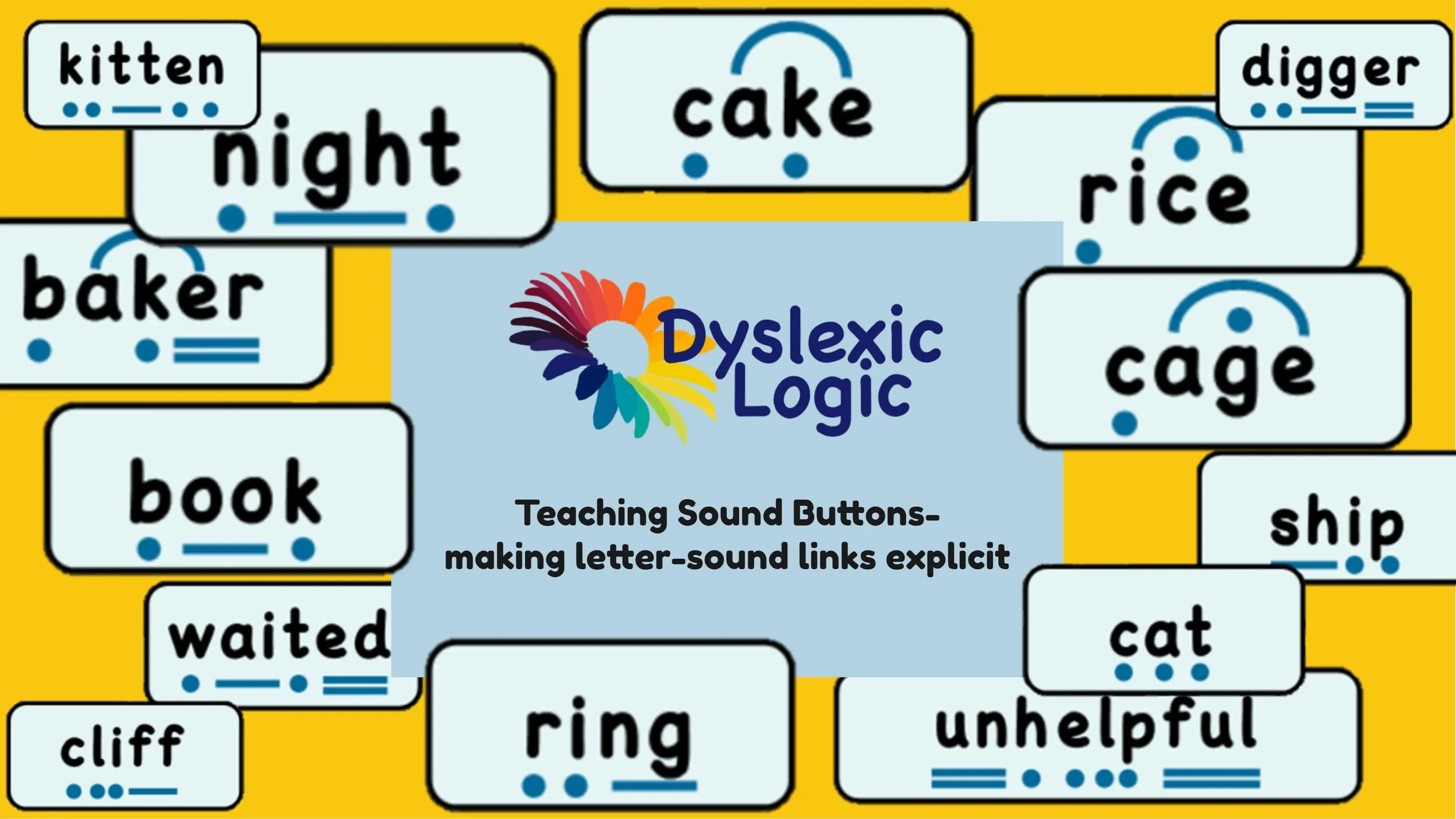Why Sound Buttons are Magic
/I have recently had a breakthrough with a new student who hadn’t been able to progress past 1-1 grapheme-phoneme correspondences for years. He couldn’t quite get past the idea that one letter represented one sound. The key to the breakthrough was sound buttons. Suddenly, we had a shared visual language to explore the relationships between letters and sounds. In the space of a few weeks, he is now able to read words like ‘toffee’, ‘bleach’ and ‘rainbow’.
Student work exploring long and short oo sounds.
student work including consonant digraphs focused on oo sounds
student work revisiting recently introduced digraphs
Student work exploring effects of the final e on different sounds
Another student struggled with ‘soft sounds’. Sound buttons really helped to show the relationship between the soft ‘c’ or ‘g’ and the subsequent letter. He was able to understand why we need to use a ‘k’ instead of a ‘c’ in certain words. He was encouraged to use sound buttons to check his own spellings, and started picking up on errors independently.
Student work focused on identifying prefixes and suffixes
A third student was learning English as an additional language. Sound buttons helped as we transitioned from a phonological to a morphological approach to words, allowing her to isolate prefixes and suffixes, but still approach the base word decoding phonologically.
I have found sound buttons such a useful tool at different stages of literacy development. Whether you are a specialist teacher, home-schooling parent, or just trying to support your child with their school spellings, sound buttons are a really underused and valuable tool that we can all share with our children.





